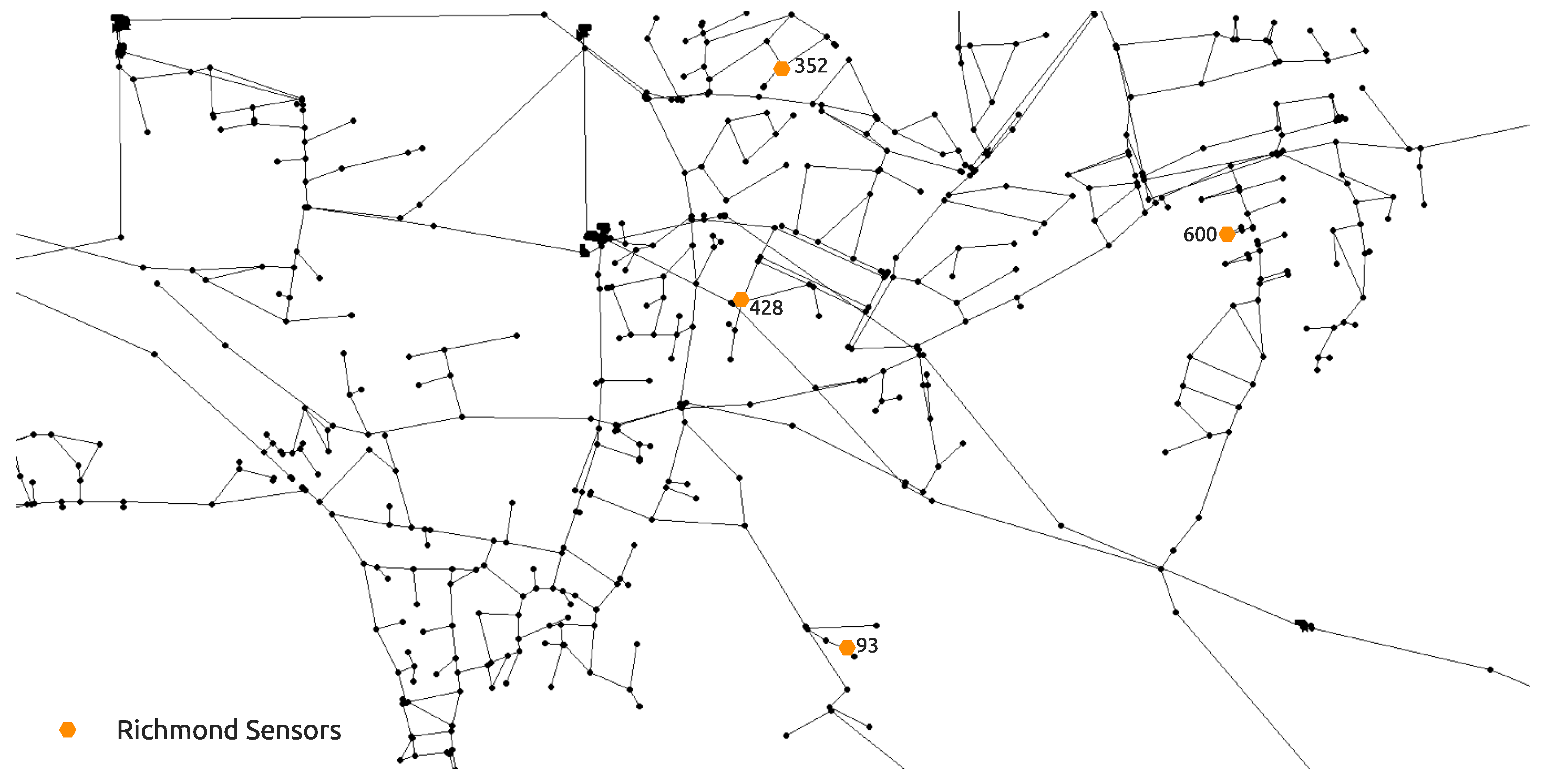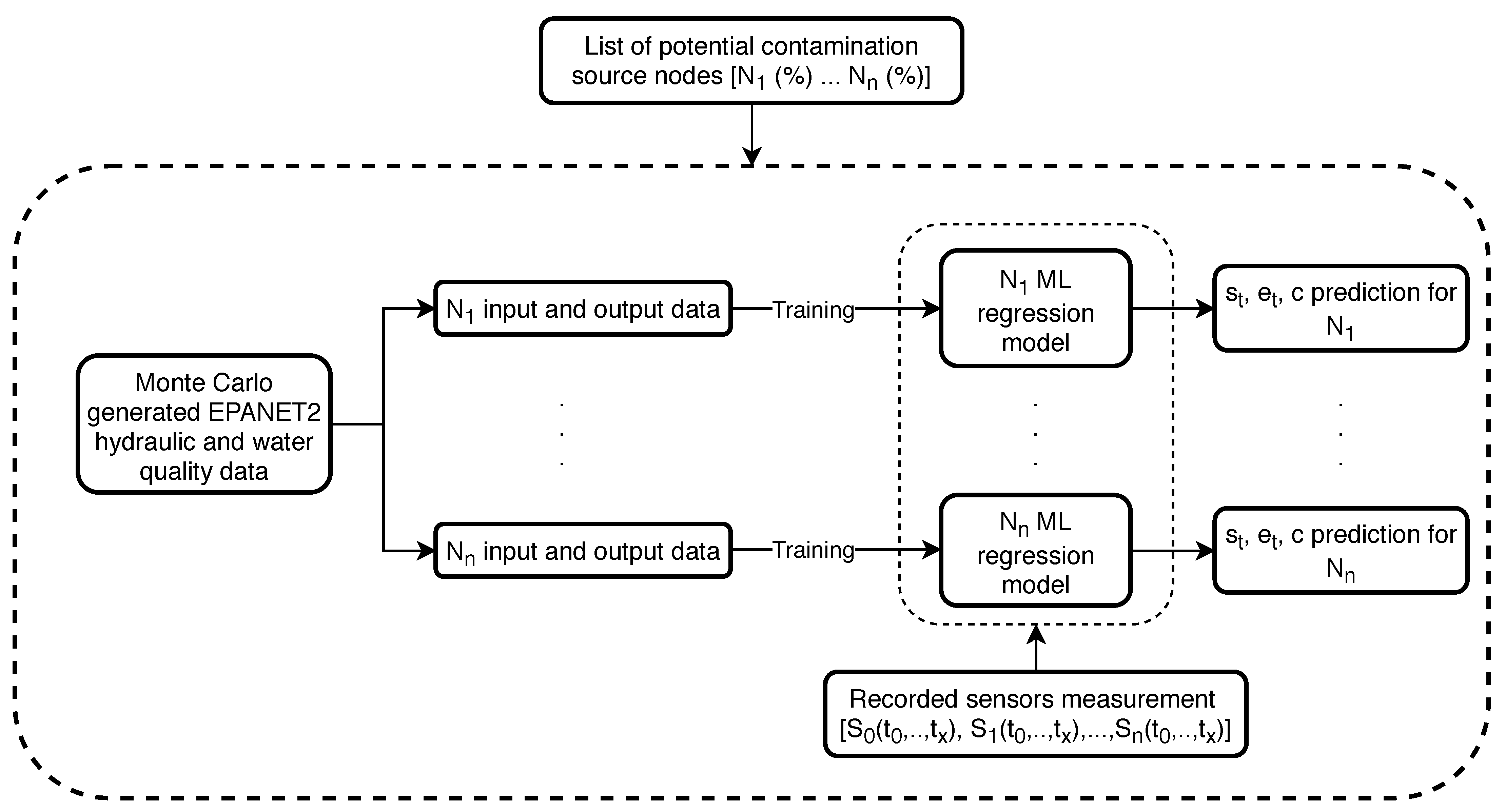Grbčić, L., Kranjčević, L., Družeta, S.
Machine Learning and Simulation-Optimization Coupling for Water Distribution Network Contamination Source Detection
Sensors, (2021), doi.org/10.3390/s21041157, (quartile Q1)
Abstract: This paper presents and explores a novel methodology for solving the problem of a water distribution network contamination event, which includes determining the exact source of contamination, the contamination start and end times and the injected contaminant concentration. The methodology is based on coupling a machine learning algorithm for predicting the most probable contamination sources in a water distribution network with an optimization algorithm for determining the values of contamination start time, end time and injected contaminant concentration for each predicted node separately. Two slightly different algorithmic frameworks were constructed which are based on the mentioned methodology. Both algorithmic frameworks utilize the Random Forest algorithm for classification of top source contamination node candidates, with one of the frameworks directly using the stochastic fireworks optimization algorithm to determine the contamination start time, end time and injected contaminant concentration for each predicted node separately. The second framework uses the Random Forest algorithm for an additional regression prediction of each top node’s start time, end time and contaminant concentration and is then coupled with the deterministic global search optimization algorithm MADS. Both a small sized (92 potential sources) network with perfect sensor measurements and a medium sized (865 potential sources) benchmark network with fuzzy sensor measurements were used to explore the proposed frameworks. Both algorithmic frameworks perform well and show robustness in determining the true source node, start and end times and contaminant concentration, with the second framework being extremely efficient on the fuzzy sensor measurement benchmark network.



